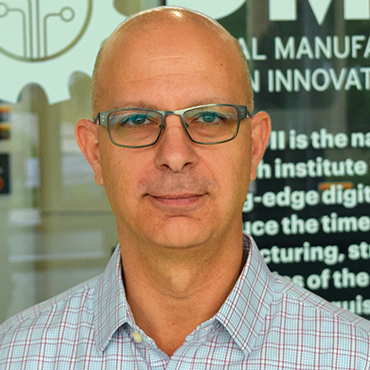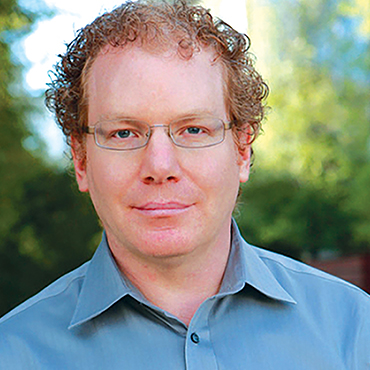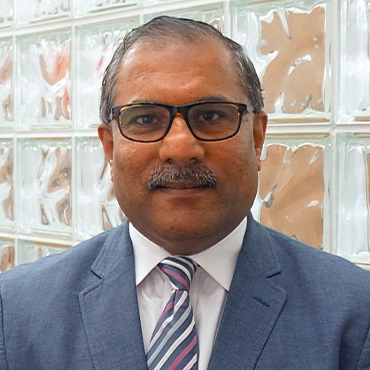2022 Foundry Industry 4.0 Conference Agenda
Contact AFS for available times: 1 - (847) 824 - 0181


Doug Kurkul and Brian Began
AFS, Schaumburg, IL

David Blondheim
Mercury Marine, Fond Du Lac, WI
Industry 4.0, Smart Manufacturing, and Industrial Internet of Things (IIoT) are prevalent in today’s manufacturing world. The definitions of these terms are often understood and the benefits are well advertised. However, the actual application and implementation of this technology is not as “plug-and-play” as needed to easily implement. Companies are impacted from a technical and cultural standpoint when they look to implement data collection and analysis from production equipment. Success requires finding skillsets that can bridge technical areas of operations, controls, IT, and data analysis. Data collection techniques do not necessarily require large financial investments. Instead, commitments of resources, time, and clearly defined purpose are needed to collect, analyze, and learn from data within a foundry.
Discussed is the journey Mercury Marine has undertaken in implementing “Connected Operations” across its manufacturing plants, including die casting, lost foam, and investment casting foundries. Insights and lessons learned on cultural and technical aspects will be shared to assist the foundry industry in practically implementing these connected concepts to collect data and improve results.
Zach Meadows
Electric Controls & Systems Inc., Birmingham, AL

Adam Westerland
Inductotherm Corp., Rancocas, NJ
The future of the industry lies in the rapidly growing Industrial Internet of Things and big data, which generate a new drive to provide connectivity with more data access and information than ever before. This drive is causing an evolution of foundry technology and the difference between standard control technology, and information technology is blurring as older technology evolves and new communications and sensors are integrated. This blurring or convergence of technology innovation comes with many productivity benefits for foundries as they utilize IOT, Big Data and AI technologies. Each of these technologies helps foundries evolve into a completely digital melt shop. At Inductotherm, we are working towards providing customers with these modern technologies to increase productivity and pave the way for the future. We see the value of the data collected now will only rise in the future as artificial intelligence (AI)-powered analytics improve.

Eric Stockman
Automation Solutions of America, Beloit, WI
The manufacturing floor has ample amounts of data that, if used properly, can give us insight into quality, scheduling, planning, resource allocation, overall equipment effectiveness, and much more. Bringing a plant online with Industry 4.0 has some hurdles when considering that not all equipment can easily connect to a data collection server. The discussion will begin with how we get data into the software and the most common communication protocols. We will look at what can be done with the data and where it is stored, server sizing and capacity and what hardware requirements you can expect, network architectures and their scalability, and some examples of projects we have executed for customers which showcase the capabilities of the software.

Jim Wenson
Sinto America, Grand Ledge, MI
For foundries, Industry 4.0 has introduced many new technologies and exciting ways to harness existing technologies. Their challenge was how to incorporate these advances into their daily operational procedures to increase uptime and keep production flowing. Having the correct information, easily accessible, and often automatically sent to their team, was essential for transitioning from a reactive culture to a proactive culture. A foundry used I4.0 platforms to provide the data needed to take the guess work out of maintaining complex machines for both experienced and novice maintenance departments.

Luis Trueba
Texas State University San Marcos, San Marcos, TX
The traceability of castings is a critical component of the implementation of Foundry 4.0 principles. An easily automated system to directly mark castings with a unique code and read the codes at various points through the production process and to the end-user will allow data collected in the foundry to be used meaningfully to track and manage quality and efficiency. However, there are challenges that must be overcome to implement a successful foundry traceability system. Among the challenges are the high process temperatures encountered by castings during production and processing, the need to provide a small marking that will not detract from the castings’ aesthetics or functionality, and the unique dimensional and surface finish capabilities of each casting process, which may vary with casting location (e.g. cope vs. drag surfaces).
Researchers at Texas State University are investigating a method for the direct part marking (DPM) of sand castings using additive-manufactured, two-dimensional mold inserts. These mold inserts use Dot Code, a robust, common, two-dimensional bar code methodology intended for high speed, and individualized direct part marking. Dot Code can be read with simple barcode scanners and mobile phone apps. The legibility of Dot Code is not reliant on precise dot spacing or size. Tags for DPM having a variety of configurations and dimensions were made using commonly available additive manufacturing processes. The tags were used to mark aluminum and brass sand castings having a variety of surface conditions. The effectiveness of the system for marking and identifying castings will be presented. Lessons learned and the potential for future work will be presented.
Mike Lakas
American Foundry Society, Schaumburg, IL
We are going through a period of exponential change. Technology is pushing the boundaries of many industries and disrupting businesses across the world. This talk will serve as a primer on technology trends driving the future of the manufacturing industry and society at large. Weary of the buzzwords and the “next big thing” that never seems to materialize into reality? Thought leader Mike Lakas will take you through a thought-provoking journey on the state of new and emerging technologies. We will cut through the hype and separate fad from future.

Tony Del Sesto
MxD, Chicago, IL
MxD, the leading digital manufacturing innovation center in the U.S., will highlight the efforts underway within its organization as it continues to support the awareness and growth of digital twins. In addition, MxD will highlight some uses cases by organizations that are leveraging the capabilities of digital twins to support in areas from design to preventative maintenance.

Nic Tarzwell
Eagle Alloy, Inc., Muskegon, MI
This presentation describes a learned journey on how a foundry tested different concepts of robotic cutting and grinding for steel and stainless gating removal, and where the speaker’s foundry ultimately settled on a design that has turned into several productive robotic cells.
Sunny Kullar
Automation Systems & Design, Dayton, OH
The foundry can be a difficult environment to work in. Castings are hot and can be heavy and ergonomically difficult to handle. This type of work makes it challenging to find labor, especially in the shortage the industry is currently experiences. Automation in manufacturing is a solution to help address the physicality of the work and the labor shortage the industry is experiencing. One option for automation is material removal to finish castings. Automating this process provides consistency and helps with safety and ergonomics. Even with a large initial investment needed with automation, justification can be achieved through reduced labor costs, improved quality and consistency, and reduced safety. This presentation will review example automation installations in foundries, highlight the benefits of automation, and provide lessons learned during implementation.

Jerry Klooster
EJ, Elmira, MI
Increased interconnectedness of OT devices causes the design of a foundry control system to become simultaneously more complex yet streamlined. With more opportunities to collect useful data plantwide, there must be a system to process and present information to employees in clear and meaningful ways. Connectedness also increases the number of inroads for potential attackers to infiltrate an OT environment, requiring an emphasis on security from all employees to make these paths difficult or impossible for an unauthorized user to traverse.

Diran Apelian
Advanced Research Center, Samueli School of Engineering, Irvine, CA
Change is the universal constant. It is startling when one reflects on the developments and changes in the last 50 years alone. Who today uses an IBM electric typewriter to get text on paper? Who uses the yellow pages (or do you even know what that is)? And who sells a car by placing an ad in the Sunday paper? Similarly, 50 years from now, we will look back and wonder how we managed to manufacture with the technologies we use today. The transformations that are taking place are significant as they not only affect the manufacturing process itself, but also the whole manufacturing ecosystem. Planning for manufacture, control of the supply chain logistics, control of inventory, and cognition of market needs and demands, as well as anticipating needs even before your customer know their needs are huge and transformational changes. In this keynote presentation, the basic principles of AI will be reviewed, and the opportunities at the nexus of AI and manufacturing will be illustrated with case studies. The presentation will end with specific recommendations; identify a path forward not only for individual manufacturers but the foundry industry as a whole.
Marshall Miller
Tesserract4D, Rock Spring, GA

William Sobel
MTConnect Institute, Oakland, CA
Smart Manufacturing provides closed-loop solutions that answer the question, “Why did something happen, and how can I make it better?” This talk addresses the technology required to curate data from equipment and associate it with the design and processes to connect with the observations and enable decision-making. It will focus on open-standards-based approaches, including MT Connect and concrete examples to illustrate how to extract value from each technological step.

Jiten Shah
PDA, LLC, Naperville, IL
The presentation will cover the methodology, framework and predictive technology to solve complex casting manufacturing problems inherent with uncertainty in a production environment. The framework consisting of data mining, AI and Machine learning, UQ (Uncertainty Quantification) and ICME driven tools together with traditional design of experiments to generate required missing data to minimize the sporadic shrinkage and maximize the yield strength in a complex sand cast high strength ductile iron structural part will be discussed. The proposed step-by-step methodology driven by the knowledge and historical data is applicable to solve any multi variant complex problems with any casting alloy and process in a digital Industry 4.0 environment. The author will also give an overview of various Industry 4.0 technologies evolving in the data science field.

David Blondheim
Mercury Marine, Fond Du Lac, WI
The foundry environment produces large volumes of time-series data. Temperature, humidity, pressure, flow rates, and amp draw are some of the time-series data in manufacturing environments. Time-series data is traditionally simplified to descriptive statistics, such as averages and standard deviations. This simplification loses important information about the process and data collected. Additionally, humans cannot process the volume of data generated within many foundry environments. New analytical approaches need to be applied within the industry. K-means clustering and autoencoders are two machine learning algorithms that can combine to efficiently process time-series data to detect anomalies within the data. This machine learning process will be demonstrated using production die casting time-series data. The goal is to demonstrate the application of these types of algorithms is not complicated.
Philippe Dubuc
Fusium, Chicoutimi, Quebec
Saguenay Foundry, a division of Fusium, has a long history of engaging with new technologies. This small-batch iron sand casting foundry has used tools such as ERP and CAD since 1998, and Industry 4.0 has given the facility more information management efficiency. Today, Saguenay uses sensor networks, automated dashboards, interconnected databases, and results-oriented communications. This presentation will describe Saguenay’s path to success, sharing the types of tools they use and their advice for other metalcasters.

Adam Kopper
Mercury Marine, Fond Du Lac, WI
Process simulation software has become an important tool for the modern foundry. During serial production, process improvement designs of experiment require immediate knowledge on which direction to adjust the process to minimize lost production and wasted machine capacity. This need requires information faster than many software packages can provide. Machine learning may hold the key to accelerating the knowledge generation from which decisions regarding the best parameters to run are made. In this work, machine learning algorithms are trained on process simulation data and evaluated on new datasets within and outside the original training parameters. The predictions made by the algorithms are evaluated against the outputs of the simulation software. Machine learning is an effective way to explore different parameters within a process window for rapid knowledge generation to drive designs of experiment on the plant floor.
Jiten Shah
PDA, LLC, Naperville, IL

John Dyck
CESMII - The Smart Manufacturing Institute, Los Angeles, CA
The 3rd Industrial Revolution (1970 – 2010) was characterized by the advent of electronics and information technology that enabled the automation of production facilities at a scale that was unprecedented. This paved the way for a wave of productivity that played a significant role in the growth of our economy over that timeframe and created an entire ecosystem of manufacturing automation/IT vendors, implementers, and practitioners to bring these innovative new capabilities into production. But as with all eras, this one too has reached its plateau, and the implications for our manufacturing competitiveness are significant.
It is well understood that manufacturing productivity and innovation has been a significant source of growth and prosperity here in the U.S. Yet as we see, the past decade has revealed an unprecedented flattening, and even decline in our manufacturing productivity (by worker). The reasons why are complex, but among others, it’s clear that the flattening value/productivity curve of Industry 3.0 has not yet made way for the promised value/productivity curve of Industry 4.0. The 4th Industrial Revolution has been hailed by many as the silver bullet that will usher in this new era of productivity and value creation. While in principle this is a reachable premise, what gets lost in translation is that the transition of the manufacturing ecosystem from one era to the next has historically been disruptive and messy. Old behaviors and business models must make way for new behaviors and business models, and those that refuse to make that transition will be remembered on the “ash heap of history.”
CESMII – The Smart Manufacturing Institute is investing $140 million to accelerate industry-wide adoption of Smart Manufacturing here in the U.S., focusing on both the cultural and technology transformation that’s essential on this journey.

Lizeth Medina-Balliet
Neenah Foundry, Neenah, WI
Industry 4.0, which encompasses IIoT and smart manufacturing, marries physical production and operations with smart digital technology, machine learning, and big data to create a more holistic and better-connected ecosystem for companies that focus on manufacturing improvements.
Often people associate Industry 4.0 with robots, cybersecurity issues, technology for larger companies, among other myths.
The truth is, Industry 4.0 starts with digitalization (converting existing data into a digital format). The next step is Big Data (Industry 4.0 tools that can help us to break data silos, connect data with each other and perform automated analytics) that will set the foundation for machine learning -- the ultimate goal in Industry 4.0.
This talk will explore a roadmap towards big data, the benefits of the cloud and how you too can implement Industry 4.0.
Jacob McGowan
Palmer Manufacturing, Merrimac, WI
Adjusting coremaker and sand mixer settings, recalling recipes, and documentation of recipe changes all require costly human intervention. Any time the worker is allowed to manually change recipes the conditions of the molds and cores can be expected to change. For example, excessive amine catalyst material can weaken a core after metal is poured. RFID is an automatic identification system that relies on storing and retrieving data using radio-frequency identification tags. RFID identification uses ‘tags’ – small electronic devices that are fastened to the mould or core box and “readers” which are devices that communicate wirelessly with the RFID tags and to the data for that tag. Data includes mixer run time, resin percentage, resin ratio, catalyst percentage, dry additive percentage, compaction table vibration intensity and duration, and can be incorporated seamlessly into a company-wide Ethernet. Excal Inc. is one of North America’s premier brass and bronze foundries, producing over 2,000 different patterns for cores of different sizes and shapes. The company found this the ideal place to implement the new RFID technology. On labor savings alone, the payback on this unit was 15 months. Productivity has increased 65% versus the prior system. Getting accurate data helps to better manage production and raw materials inventory. RFID users have the ability to expand automation a little at a time, making this ideal for both small and large foundries.

Laura Robb Elan
MxD, Chicago, IL
In this presentation, MxD, a digital manufacturing and cybersecurity institute, will provide some key insights into what you can do to secure your operations and learn the latest about the CMMC 2.0 requirements through their Cyber Marketplace, which will directly benefit your cybersecurity posture. In addition, MxD will highlight some use cases by organizations that specialize in metalcasting design, virtual simulations and are part of the critical manufacturing supply chain that demonstrates the effectiveness of these tools and approaches.
Vincent Coker
Electric Controls Systems Inc., Birmingham, AL
Lisa Pate
American Cast Iron Pipe Company, Birmingham, AL
Many foundries in America are older facilities. Because of this, adoption of Industry 4.0 will look very different than in a greenfield manufacturing facility. We all know the challenges facing investment in the Industrial Internet of Things to improve data acquisition (reliability, security, cost), so it is important to have a phased road map to meet your goals. We will touch on these strategies and give examples of advancements we have seen. Primarily, we see investment in tablets and handheld devices used to collect a wide variety of data without the need for a static/hardwired operator or technician workstation. Additionally, we will discuss how recent advances in vision systems can now go beyond simply reading a barcode, detecting even the smallest defects and tolerances, even on highly reflective parts.



David Blondheim
Mercury Marine, Fond Du Lac, WI
Phillippe Dubuc
Fusium, Chicoutimi, Quebec
Lizeth Medina Balliet
Neenah Foundry, Neenah, WI
John Dyck
CESMII - The Smart Manufacturing Institute, Los Angeles, CA